Words by Roberto Motta
Photos by Renault Communications
Last week we brought you a bit of news about Renault’s plans for the new range of electric cars to go on sale in mid-2011.
This week, we present the DeZir electric concept car, first seen at the Paris Auto show in October 2010. The Z is for zero emissions, and the name is pronounced desire, even in French. And it is desirable—along with the Citroen Survolt certainly one of the most interesting and attractive concept cars we’ve seen in a long time. In the past few years, it seems that the French have taken the lead in both styling exercises and pushing the envelope on diesel and electric forms of propulsion.
According to the press release, the “DeZir is a concept car with an emotional styling a sensuous lines and bright red finish passion. Powered by an electric engine, for the Renault management, DeZir is proof that environmental concern and a love for cars are no incompatible.” We can agree with that.
Designed by the Dutch Laurens van den Acke, DeZir is a concentration of ideas that we will find on the Renault’s cars in the coming years.
Laurens van den Acker, has replaced Patrick Le Quement at the lead of Renault, and has also changed the method of work in the design center; for the future, every working group will develop each new vehicle from concept to the prototype of the vehicle to be produced in series. Van den Acker has three slogans of the new style is “simple “, “sensual” and “hot”.
In short words, the French brand will try to give its customers a typical model for every moment of life: that of youth, family, responsibility and work, maturity and wisdom.
The result of the ‘new era’ startup is a two-seater coupé which is both sculptural in spirit yet perfectly harmonious. DeZir’s shape features prominent wheel arches that accommodate 21-inch wheels, the design of which took its inspiration from the notion of movement.
Powered by a center-mounted electric engine that develops 110 kW and 226 Nm. the DeZir uses a lithium-ion battery with 24 kWh, enough for a range of 160 km and rechargeable in three ways: 8 hours from the house current at 220 volts; 80% in only 20minutes from a 400 volt high amperage feed, or the Quick Drop, the new quick-change battery system that Renault is studying together with Better Place.
DeZir uses a rear wheel drive with an electronically controlled action for more traction and directional. The Kevlar body is mounted on a tubular frame, like in the Megane Trophy race from which the DeZir also takes the double wishbone suspension. DeZir has a weight of only 830 kg (1829.8 lb), and is able to go from 0 to 50 km/h in only 2 seconds and from 0 to 100 km/h (60mph) in 5 seconds. A KERS type energy storage system can be called upon to give an extra boost for a few second by pulling a lever on the steering wheel. The DeZir’s low drag coefficient of 0.25 allows it to reach 180 km/h.
In terms of style, the main features of the concept study are the round hips, the smooth transition between concave and convex surfaces, the thin headlights and grille around the traditional Renault diamond emblem. DeZir’s front features a full-width air-intake which strikes out either side of a large, vertically positioned Renault logo that proudly displays the car’s pedigree. Meanwhile, the chrome finish of the diamond-shaped logo contrasts with the dark spaces of the grille.
DeZir is also inspired by the Audi R8 and has an aluminum side accent that recalls the ripples of the water. Another feature is an original asymmetric gull-wing doors opening. On the driver’s side the door is hinged in front while on the passenger’s side the door is backwards.
Inside the cockpit is inspired by aviation and the central part of the dashboard is dominated by a touch-screen where you can control the computer, which optimizes the routes according to the needs of the driver, and the audio system designed by the IRCAM (Institut de Recherche et Coordination Acoustique / Musique), founded by the contemporary composer Pierre Boulez in 1969. The one-piece, two-seater front benchseat provides cocoon-like comfort and comprises a number of interlocking elements trimmed in white leather, with a quilted pattern on the passenger’s side, and a contrasting uniform finish on the driver’s side, as if to suggest an inexorable attraction between the two. The interior styling takes its inspiration from the idea of an amorous encounter and is based on a
coming together of opposites. Truly French!
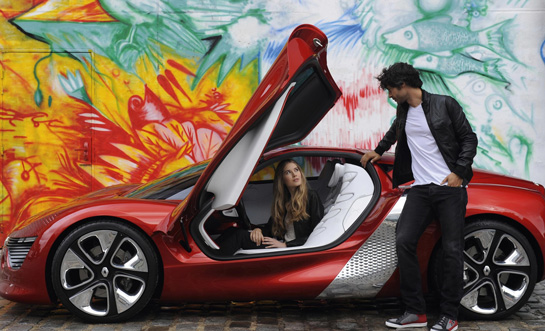
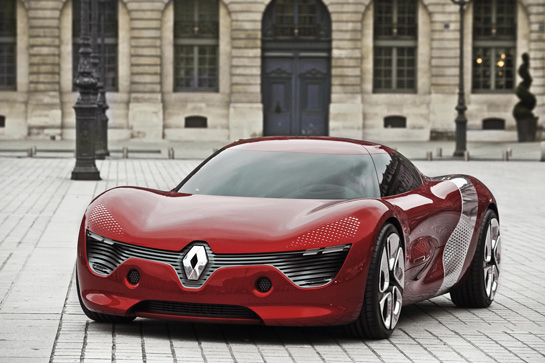
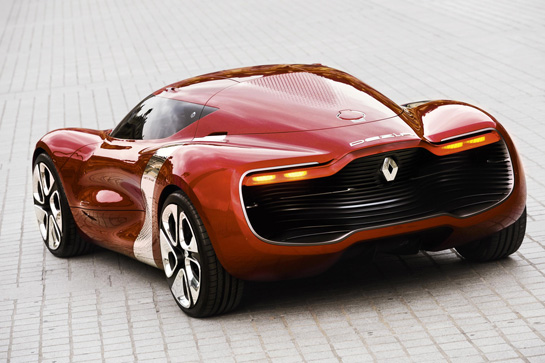
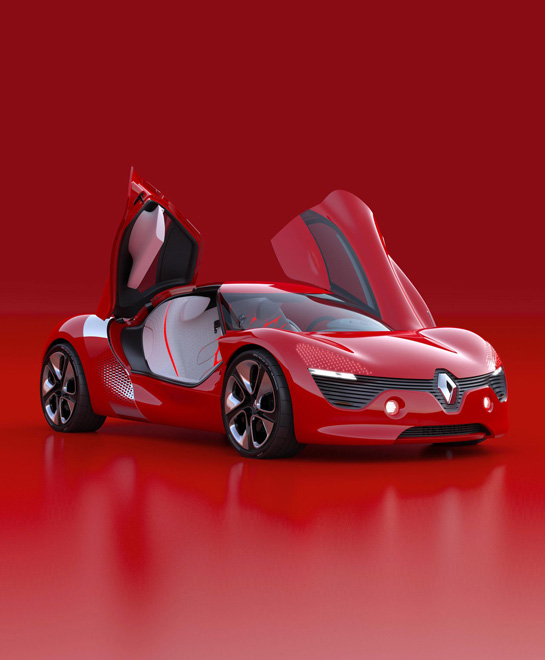
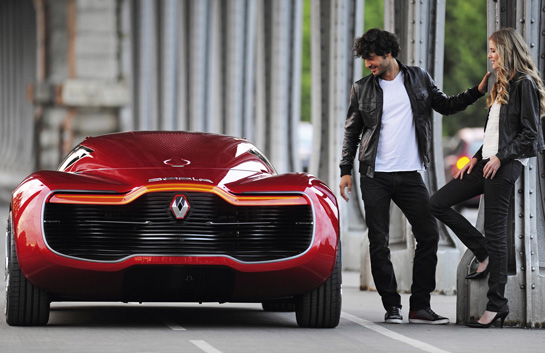
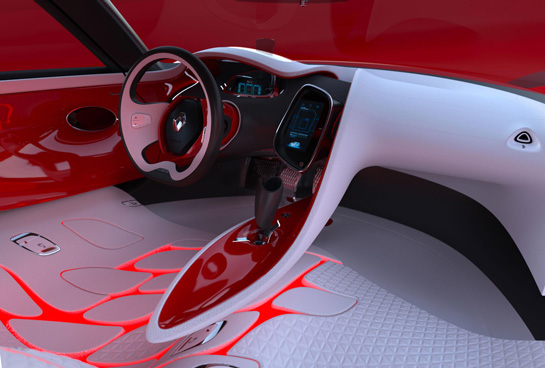
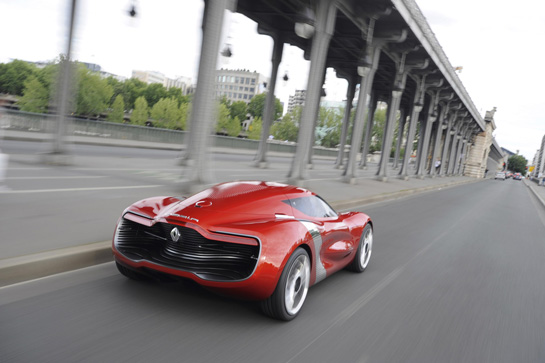
Stunning. Living in the US its easy to forget that Renault is still building cars, and some pretty good ones at that. Its nice to see that automotive design is alive and well while we have to live with the mundane. Hope it doesn’t loose its DeZir-ability when it goes into production, ala Volt